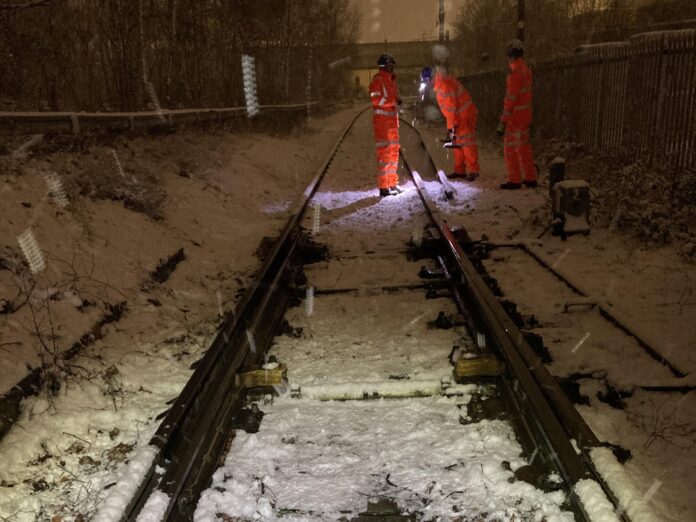A groundbreaking initiative utilising advanced thermal modelling is set to deliver significant cost and carbon reductions for the UK’s railway network. The collaborative effort, spearheaded by Network Rail, AtkinsRéalis, Balfour Beatty, and TSO under the Central Rail Systems Alliance (CRSA), promises to revolutionise the approach to railway point heating systems.
The move comes as Network Rail plans to expand the installation of “points heating systems” at crucial locations across the country. These systems are vital for preventing the build-up of snow and ice on tracks, ensuring reliable train operations during harsh winter conditions.
However, the widespread adoption of this technology traditionally brings a substantial increase in energy consumption. Initial forecasts indicated that electricity demand at up to 20 sites could exceed existing supply capacity, potentially leading to costly and disruptive upgrades to the energy infrastructure.
To address this challenge, Network Rail’s Eastern Routes capital programmes (track) engineering team worked closely with the CRSA. Their recommendation to reduce the power output of point heating systems from 200 Watts/metre to 150 Watts/metre has now been implemented by Network Rail as a National Variation and policy change. This decision underscores the CRSA’s commitment to driving efficiency and continuous improvement within the rail sector.
The pivotal element in this breakthrough was an extensive thermal modelling exercise conducted by AtkinsRéalis on behalf of the CRSA. This analysis identified significant energy efficiency gains and recommended the change in standards. This intervention is projected to save over £3.6 million that would have been required for power network upgrades, while also preventing months of delays to essential track improvements.
Early implementation of the revised policy in Network Rail’s Eastern region has already yielded tangible results. Planned Distribution Network Operator (DNO) upgrades at Northallerton and Black Carr have been eliminated, as the reduced energy demand now falls within the existing supply capacity. The policy change is anticipated to generate millions of pounds in savings annually across the entire network, with estimated average savings of £190,000 per applicable site.
Beyond the financial and environmental benefits, the initiative also enhances safety by negating the need for on-site workers to physically install new DNO and lineside equipment.
Steve Hughes, Network Rail project director, said: “This initiative demonstrates our commitment to collaborative working, stakeholder engagement and what can be achieved through a collective approach to finding more efficient solutions and ensuring we spend public money wisely, while continuing to operate a safe, efficient and reliable railway. Recognising that track cannot be 100% resilient to the extremes of cold weather, this approval of this variation will continue to maintain our high standards of safety and performance, in putting passengers first, whilst reducing costs and our carbon footprint.”
Keith Prentice, director at AtkinsRéalis said: “This initiative is a perfect example of the need to approach the industry’s challenges creatively to find ways to reduce financial pressures and environmental impact. This change in standards has high potential across the entire UK rail network, allowing for more targeted and strategic investment in the upgrade and renewal of the UK’s rail networks.”
Alan Atkins, CRSA Alliance Director, said: “This breakthrough in thermal modelling exemplifies the power of collaboration within the CRSA, delivering smarter, more efficient solutions for the railway. By reducing energy demand and cutting costs, we’re not only ensuring a more resilient network but also making a significant contribution to sustainability and future-proofing rail infrastructure.”
The initiative emerged from Network Rail’s Minimum Viable Product (MVP) approach for Control Period 7 (CP7), a framework designed to ensure projects meet customer needs with lower costs and more efficient designs. This success story highlights the potential for innovation and collaboration to drive positive change within the UK rail industry.




